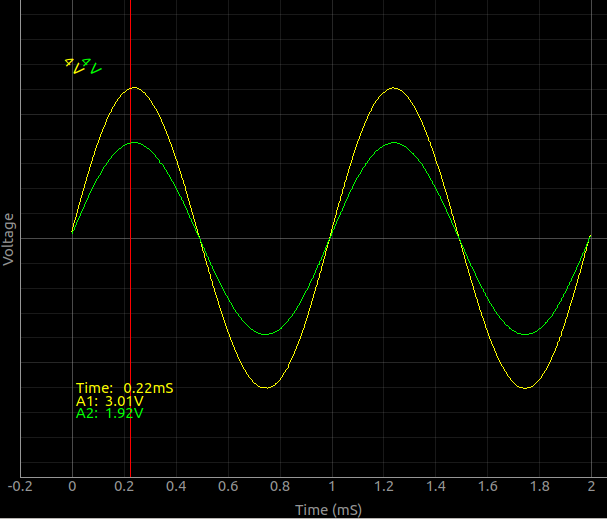Measure resistance by comparison
According to Ohm's law, current through a conductor and the potential difference between it's end are proportional. The constant of proportionality is called the resistance. Mathematically R = (V)/(I). When two resistors are connected in series, the current will be same through both. I = (V1)/(R1) = (V2)/(R2). if the value of one resistance and the voltage across both are known, the other resistance can be calculated from R1 = R2 × (V1)/(V2)
Objective
Find the value of an unknown resistance by comparing it with a known resistance, using the equations given above. Assume R1 is the unknown resistance and R2 is 1000Ω
Procedure
- Fix the two resisters in series on a bread board.
- Connect the junction to A1
- Connect the other end of R2(1kΩ) to Ground.
- Connect one end of R1 to PV1
- Set PV1 to 4 volts.
- Enable the Checkbutton on top right, to measure the DC voltage at A1.
Current I = (VA1)/(R2) and R1 can be calculated using R1 = (VPV1 − VA1)/(I).
Ohm's law in AC circuits
It can be easily shown that this measurement can be done using AC also. We will use both A1 and A2 inputs here.
- Fix the two resisters in series on a bread board.
- Connect the junction to A2
- Connect the other end of R2(1kΩ) to Ground.
- Connect one end of R1 to both WG and A1
- Set WG to 1000Hz
- Enable A1 and A2
- Enable the Cursor Check button to diplay the voltages at the cursor
Taking voltage reading from the picture below, I = (1.92)/(1000) and R1 = (3.01 − 1.92)/(0.00192) = 576.7

Discussion
In this measurements we have made the assumption that no current flows in to A1 and A2. This is not true, they both have an input impedance of 1MΩ . This will matter when we use resistance values of mega Ohms range. To illustrate this connect WG to A1 using a wire and the same signal to A2 through a 1MΩ resistor. Try to explain the results using Ohm's law.